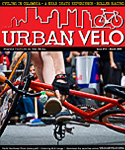Suburbs turning more bike-friendly
Steve Buchtel knows you can't turn around a culture of car dependency overnight. That's particularly true in Chicago's ever-growing suburbs to the west and south where bus and train schedules are erratic and well-defined bicycle routes scarce.
So when Buchtel's hometown of Homewood recently landed a $114,000 federal grant to improve its bicycling amenities, there was no shortage of ideas on how to spend the money. The plan is to buy 100 parking racks, install signs along bike routes, paint new bike lanes on major roads and produce a villagewide map of connecting routes to show cyclists the best ways to get from here to there.
These might seem like small changes in the village of nearly 20,000 in southern Cook County. But for cycling enthusiasts such as Buchtel, they are steps toward solving a big problem in the suburbs: Residents are more likely to hop in their cars and not on their bikes for even the quickest errands.
The glut of traffic clogs roads through quaint downtown centers and jams parking spaces at the neighborhood supermarket. It creates long lines at the gas pump and in front of schools. While traffic hassles are not unique to the suburbs, they are exacerbated in sprawling bedroom communities that are not designed for pedestrians and have limited public transportation options.
"In Chicago, public transit can get you pretty much anywhere anytime. In the suburbs, it can take you some places some of the time," said Buchtel, a lifelong cyclist and project coordinator for the non-profit Chicagoland Bicycling Federation. "Bikes can help fill that void."
Slowly, small towns growing in the shadow of Chicago are getting the message. Like Homewood, communities such as Oak Park and Hinsdale have crafted comprehensive bicycling plans to improve safety, upgrade bike routes, establish new ones and drum up interest in two-wheel travel.
Blue Island held its first pro-am bike race in July to promote the sport and has since installed 30 parking racks downtown. Palos Heights held a Shop by Bike promotion last summer and invested in more parking racks downtown.
"There's kind of a perfect storm right now of traffic concerns, climate concerns and health concerns that has kind of rekindled interest in cycling," Buchtel said. "The suburbs largely grew up and developed without regard to these things and have fewer tools to combat them than the city does. So it's vital that communities that do change show others how it can be done."
In 2006, Chicago unveiled an ambitious plan to complete a sprawling network of 500 miles of bike routes on-road and off by 2015. Work is also under way on the $20 million Calumet-Sag Trail that will ultimately connect five regional trails and stretch for more than 150 miles through forest preserves and along the Calumet-Sag Channel.
Many see the suburbs as the next frontier.
"It's not about forcing people to change their behavior and give up their cars," said Tim Gustafson, a transportation planner with T.Y. Lin of Chicago, which has worked on bicycle projects in Hinsdale, Naperville and Evanston. "This is about giving people another choice."
It's possible because there is more state and federal funding available for alternative transportation projects, Gustafson said. Homewood, which launched its bicycling project more than a year ago, will pay less than a quarter of the cost, or about $30,000, for its improvements, said Village Manager Mark Franz. The remainder of the bill will be covered by the $114,000 grant from the Congestion Mitigation and Air Quality program of the U.S. Department of Transportation.
"We don't have grandiose plans that these will change overnight," Franz said. "These are baby steps on a long road to get people to understand you don't need to take your car everywhere. We'd like to think that attitude will be the wave of the future."
Buchtel knows this "bicycle movement," as he calls it, will take time. But as more people leave the comforts and convenience of the city for more space in the suburbs, he is hopeful a few will look to retain their independence from cars.
"As I look at the region, there are so many towns that are just a plan away from being bicycle-friendly," Buchtel said. "That's where we have to start."
thanks nolen











1 comments:
BTW: the city of HSV just announced that is has a $12.3 million SURPLUS in tax revenue this year. Sounds like a good time to send in realistic cycling short-term wishes-- such as bike racks, repairs, maps, signs, etc. Perhaps a few things could get done though I'm thinking of baby-steps, not the mistress plan...
Post a Comment